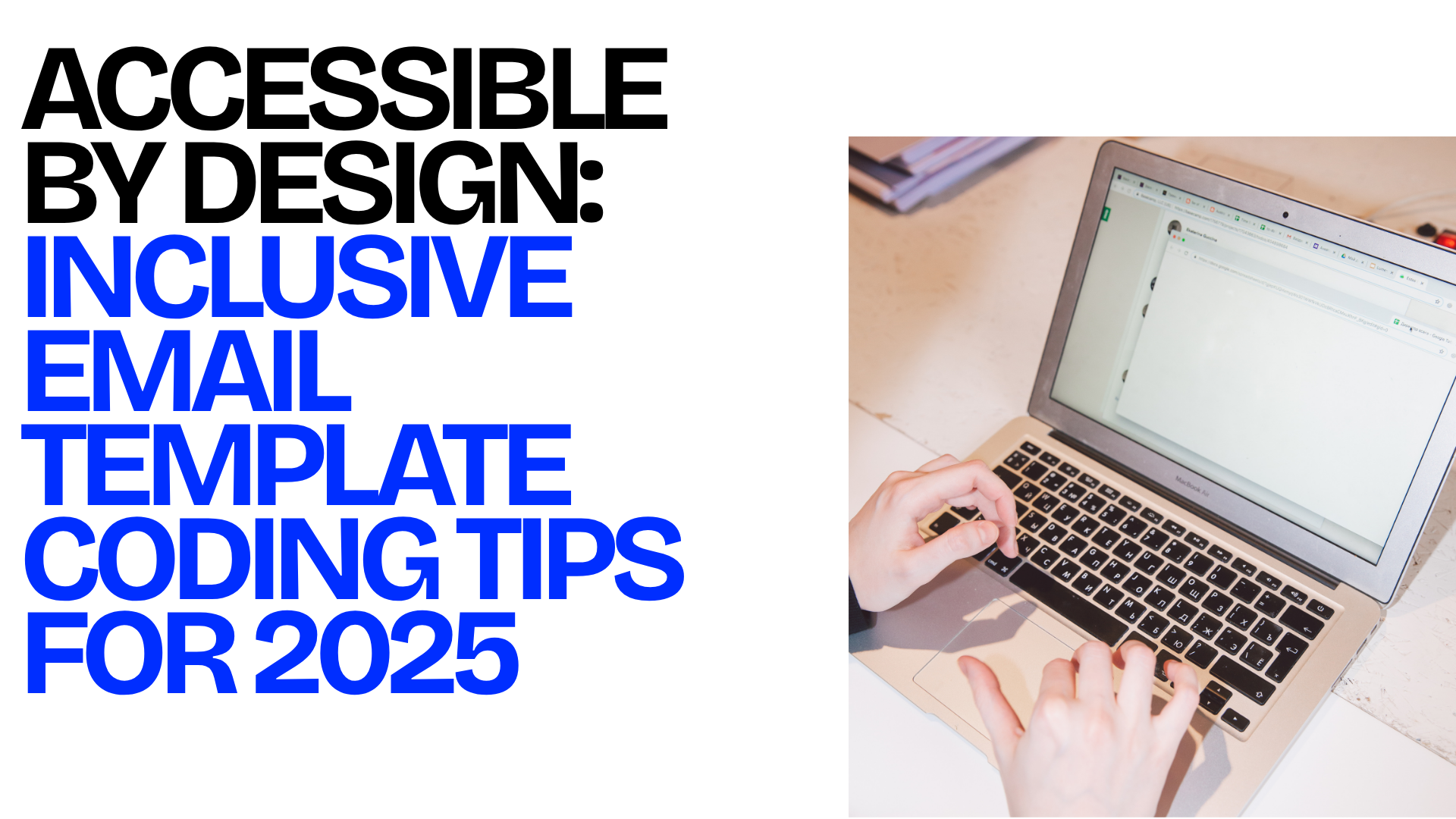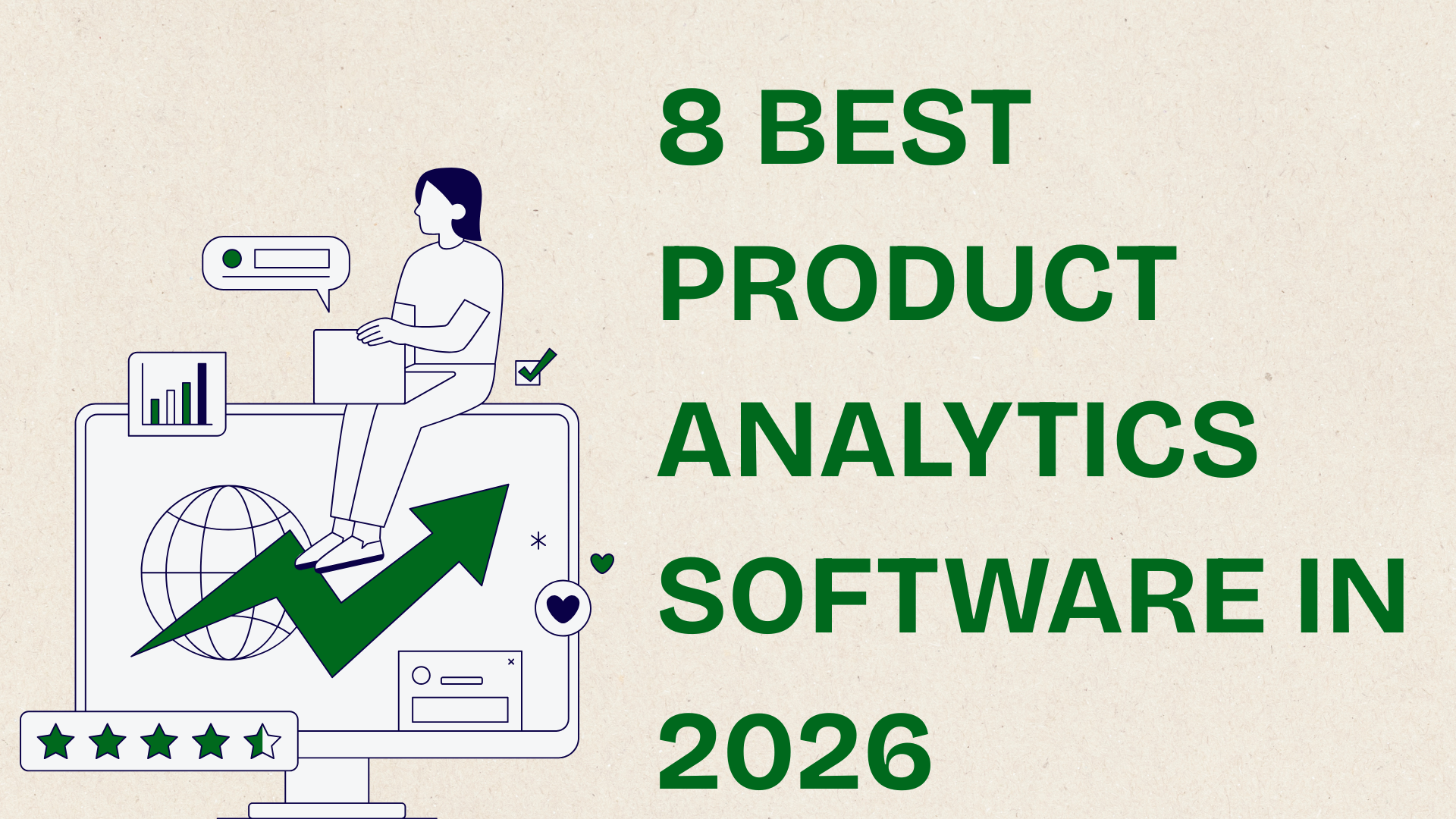So, you’re an email marketer or a business owner looking to build lasting relationships with your subscribers. But somewhere down the line, you have failed to do so.
You may have completely missed the point.
The inbox in 2025 is louder. It’s richer and faster. More demanding than it has ever been. It’s only going uphill from here in 2026. Because people know… they know exactly what they want from brands and their communications.
And yet, beneath all the automation, beneath the personalization layers and the predictive journeys humming in the background, one truth has climbed above the noise with absolute clarity:
Accessibility isn’t optional. It’s non-negotiable. Not a “nice to have.” Not a compliance checkbox. But a responsibility. A reputation. A requirement.
And the inbox, which is the most universal, the most personal of all digital touchpoints, is finally under the microscope it’s always deserved.
The ultimate objective is to craft templates that speak with clarity to every reader. And it shouldn’t be a concern what device they are on. Your emails should feel personal to them.
So, are you ready to dive in and learn the nuances of email template coding services? Let’s cut to the chase.
Table of Contents
|
Let’s build emails that include, not exclude. Let’s build emails that welcome every audience. Emails that do what great communication is meant to do: reach everyone where they are.
Significance of accessibility in email design
With the right email template coding, you can build accessible emails that –
* Serve everyone equally
* Comply with global regulations
* Strengthen trust and usability
* Increase engagement for all users, not just those with disabilities
In a world where attention is fleeting, clarity is currency. Accessibility delivers both.
Now, let’s see what makes accessible email templates so useful.
Key principles of accessible email templates
Here are three key principles of accessible email templates.
1. Clear content structure and semantic hierarchy
A screen reader reads what you structure, not what you see. Accessible emails rely on:
* Heading hierarchy: H1, H2, H3 used logically
* Semantic HTML: meaningful tags, not visual hacks
* Predictable reading flow: left-to-right, top-to-bottom
* Tables only for layout, not for reading logic
When structure makes sense, assistive technology can guide the user without friction.
2. Readability and typographic best practices
Typography decides whether the message feels effortless or impossible.
Core rules:
* Minimum 14–16px body text
* Larger CTAs for easy tapping
* 1.4x–1.6x line-height for readability
* Avoid text embedded in images unless replaced by meaningful alt text
* Maintain spacing for scannability, especially on mobile
Readable is reachable. Readable is inclusive.
3. Color contrast and visual clarity
WCAG AA demands a 4.5:1 contrast ratio for body text. AAA requires more. The design implications are simple, like –
* High contrast isn’t negotiable.
* Color should never be the only indicator (think error states or sale labels).
* PSD and Figma files must be built with accessible palettes from the start.
* Avoid thin fonts on colored backgrounds.
Contrast guides comprehension. Color supports clarity. Together, they build inclusive design.
Now, let’s discuss the coding techniques that make emails accessible by design.
Coding techniques for accessible email beyond 2025
Here are five coding techniques to design accessible emails in 2025 and beyond.
1. Alt text, ARIA labels, and descriptive attributes
Every image must answer one question: What would a blind user hear?
Here are a few guidelines to correct that.
* Use meaningful alt text for logos, product images, and diagrams
* Use empty alt="" for purely decorative graphics
* Add aria-labels when additional context is needed
* Avoid redundancy (alt="button" on a button is unnecessary)
Accessibility starts at the attribute level. Line by line. Tag by tag.
2. Bulletproof buttons and keyboard-friendly CTAs
Image-based buttons break. Live-text buttons do not. So, accessible buttons require:
* <a> styled as a button using HTML/CSS
* Adequate padding for touch targets
* Clear focus states for keyboard navigation
* Higher contrast backgrounds
Bulletproof buttons work across Gmail, Outlook, Apple Mail, and every assistive interface in between.
3. Accessible tables and data presentation
Tables can be powerful or problematic. So, for accessibility, you should:
* Use tables only for layout or structured data
* Add <th> tags for headers
* Include role="presentation" when tables are layout-only
* Provide captions or summaries for data sets
* Avoid nested tables that confuse screen readers
Clarity in table design prevents confusion in interpretation.
4. Live text over image-based content
Image-only emails fail silently:
* Blocked images
* Dark Mode inversion
* Low bandwidth rendering
* Screen readers ignoring key information
Live text ensures:
* SEO-friendly messaging
* Readability across clients
* Accessibility for visually impaired users
* Faster loading and better deliverability
Designers should slice PSDs with “text-first” layouts, not “image-first” aesthetics.
5. Dark mode-compatible accessible coding
Dark Mode is now a default for millions. Accessible Dark Mode includes:
* Conditional CSS using prefers-color-scheme
* Avoiding pure black (#000000) or pure white (#ffffff)
* Ensuring logos and icons don’t disappear
* Testing for inverted colors on iOS and Outlook
Dark Mode should enhance the experience, not erase the message.
Now, let’s see how accessible emails are created from the start.
Designing accessible emails from the ground up
Here are three quick steps to help you design accessible emails from the ground up.
1. Accessibility considerations in the PSD/Figma stage
Accessibility starts before code. It starts at the concept stage. Your design teams must consider:
* Hierarchy that aligns visually and semantically
* Legible typography from the start, not later adjustments
* Tap-friendly buttons sized for mobile thumbs
* Modular components that scale consistently
Inclusive design is intentional design. Always remember that.
2. Mobile-first accessible layout planning
Mobile leads email engagement, so mobile must lead accessibility. Here are the best practices you need to follow:
* Clear stacking order
* Generous spacing
* CTA placement that avoids crowding
* Touch-friendly navigation
* Avoid hover-only interactions
If it works seamlessly on mobile, it works everywhere.
3. Building inclusive visual elements
Often overlooked. Often decisive.
Here are a few guidelines to ensure inclusivity in visual elements.
* Icons should not rely on color alone
* Charts require accessible patterns and labels
* Imagery should reflect real diversity
* Visual metaphors should be easy to understand
Inclusive visuals are not decoration, they’re representation.
Technical email accessibility considerations for 2025
Here are a few technical considerations for email accessibility for 2025 and beyond.
1. Screen reader compatibility across clients
Screen readers read emails differently. VoiceOver. NVDA. JAWS. TalkBack. The common issues include:
* Reading order confusion
* Alt text misinterpretation
* Table navigation loops
* Duplicate text from hidden code
Agencies must test across tools, not assume compatibility.
2. Code validation and accessibility testing
2025 accessibility testing requires:
* Automated tools (WAVE, Axe, Litmus Accessibility Checker)
* Manual screen reader review
* Color contrast validation
* Mobile first QA
Automation catches coding errors. Humans catch context.
3. PDF, GIF, and video accessibility in emails
Supporting assets must consider:
* Transcript links for videos
* Reduced-motion GIF versions
* Photosensitivity-friendly animations
* Accessible PDF alternatives
Every format carries accessibility responsibility.
Why accessibility enhances email performance?
When emails become clearer, performance improves.
Accessibility increases:
* Readability → higher engagement
* Comprehension → stronger CTAs
* Trust → higher retention
* Usability → fewer unsubscribes
* Deliverability → better sender reputation
Accessibility isn’t a constraint. It’s a competitive advantage disguised as compliance.
Final thoughts and best practices
Here are some pro tips our experts suggest to ensure a smooth, effective implementation.
|
For Designers |
For Developers |
For Marketing Teams |
|
Begin every concept with accessibility baked in |
Write semantic, predictable HTML |
Make accessibility a strategic pillar |
|
Use strong contrast and legible type |
Test with screen readers, not just previews |
Develop brand-wide accessibility guidelines |
|
Avoid image-only messages |
Maintain reusable accessibility code blocks |
Train writing teams on inclusive messaging |
|
Build modular, scalable design systems |
Optimize for Dark Mode and mobile |
Require accessibility audits for every campaign |
Wrapping up
That brings us to the business end of this article, where it’s fair to say that accessible email design in 2025 is more than technical hygiene. It’s more than compliance. It’s a statement of care, clarity, and responsibility. And things are only getting better in 2026. There are no two ways about it.
When brands design inclusively, they signal respect. When developers code accessibility, they expand reach. When marketers prioritize accessibility, they nurture trust.
Every email should speak to every audience. Now is the moment to audit, refine, rebuild, and embrace accessibility as the standard for modern communication.
Your next template isn’t just an email. It’s an invitation to everyone.
















Post Comments